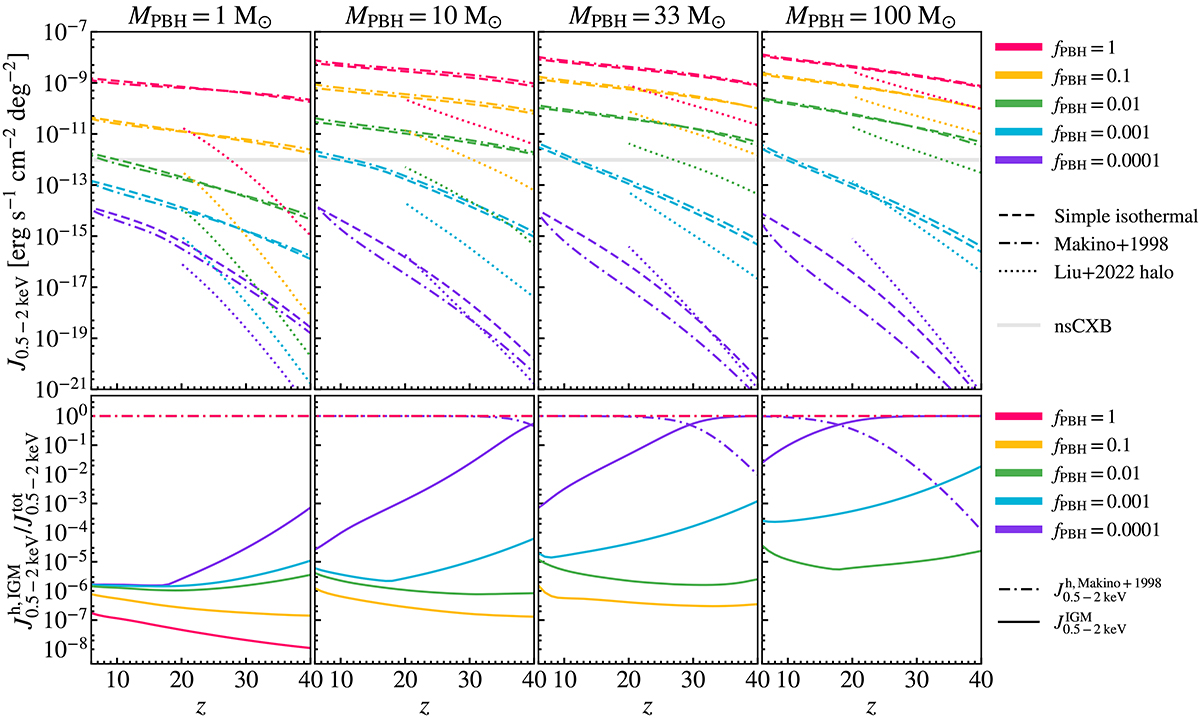Fig. 3.

Download original image
Contribution of accreting high-z BH sources to the present-day (z = 0) soft X-ray background (0.5–2 keV). The top row shows the cumulative evolution of the integrated background intensity, JX, as a function of redshift z, for PBH masses of MPBH = 1 M⊙, 10 M⊙, 33 M⊙, and 100 M⊙ in each column. Different values of fPBH are represented by distinct colours, as indicated in the legend, ranging from 10−4 to 1. The grey shaded region corresponds to the observed excess X-ray background reported in Cappelluti et al. (2017). Three halo density profiles are considered: simple isothermal (dashed lines), the profile from Makino et al. (1998) (dashed-dotted lines), and the profile from Liu et al. (2022) (dotted lines). The bottom row illustrates the relative contributions of halos (![]() ) and the IGM (
) and the IGM (![]() ) to the total X-ray background intensity (
) to the total X-ray background intensity (![]() ). These are represented as
). These are represented as ![]() (dashed-dotted lines) and
(dashed-dotted lines) and ![]() (solid lines), respectively. The relative contributions are computed using the same PBH masses and density profile configurations as in the top row.
(solid lines), respectively. The relative contributions are computed using the same PBH masses and density profile configurations as in the top row.
Current usage metrics show cumulative count of Article Views (full-text article views including HTML views, PDF and ePub downloads, according to the available data) and Abstracts Views on Vision4Press platform.
Data correspond to usage on the plateform after 2015. The current usage metrics is available 48-96 hours after online publication and is updated daily on week days.
Initial download of the metrics may take a while.


